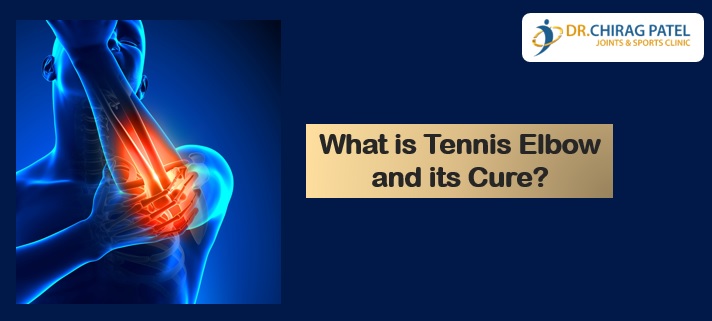Tennis elbow is an inflammation of the tendons that join the muscles of the forearm to the out side of the elbow. It often occurs due to over using the forearm muscles and tendons and those around the elbow joint. Tennis elbow is also known as lateral elbow pain or lateral epicondylitis and is not necessarily related to tennis.
However, tennis players often develop the condition because it stems from repetitive muscle use. Half of all tennis players will get tennis elbow in their career. It usually occurs between the ages of 30 and 50 years.
Tennis Elbow Symptoms:
- The most common symptom of tennis elbow is recurring pain on the outside of the upper forearm, just below the bend of the elbow.
- Pain may also be felt further down the arm, towards the wrist. Pain can occur when an individual lifts or bends the arm. It is also felt while performing basic actions, such as writing or when gripping small objects.
- Tennis elbow can cause pain when twisting the forearm. This can be noticeable when turning a door handle or extending the forearm fully.
Tennis Elbow Causes:
- The cause of tennis elbow stems from repeating incorrect movements of the arm. This can lead to small tears in the tendon attachment at the elbow.
- In tennis, this translates to the repeated motion and force of hitting a ball with a racquet. Incorrect technique can cause the power in the swing of a racquet to rotate through and around the wrist. This creates a movement on the wrist instead of the elbow joint or shoulder.
- This can increase pressure on the tendon and cause irritation and inflammation. Most often, the extensor muscles become painful due this tendon breakdown. The extensor muscles are those that straighten the wrist.
- Tennis elbow is associated with the extension of the fingers and the wrist. This is the kind of movement that allows the person to “snap” or flick the wrist, such as during a racquet swing.
- Other causes which tennis elbow can also stem from daily activities such as using scissors, cutting tough food, gardening, sporting activities that involve high amounts of throwing, swimming, manual work that involves repetitive turning or lifting of the wrist, such as plumbing, typing, or bricklaying. Sometimes, there is no apparent cause.
How do you Diagnose Tennis Elbow?
- An X-ray or MRI scan is sometimes needed to rule out other more severe conditions such as arthritis or an elbow joint injury. However, imaging is rarely necessary.
- The doctor will test a range of motions with the arm before asking about the location and nature of the pain. This is normally enough information for tennis elbow diagnosis.
- An MRI gives a more detailed image than an X-ray, as it includes the soft tissues, muscles, and tendons inside the arm.
- This may be required if the outer elbow pain does not respond to conservative treatment after a year. Electromyography (EMG) may be used to find out if the nerves are compressed.
Treatment Options Tennis Elbow :
Several treatment methods can be used at home or after consulting a physician.
- Rest: Resting the arm is one of the important things to treat. A break in activity allows the tears in the tendon attachment to heal. Tennis players treat more serious cases with ice, anti-inflammatory drugs, soft tissue massages, stretching exercises and ultrasound.
- Physical therapy: Physical therapists commonly advise that racquet sports players strengthen their shoulder, upper arm and abdominal muscles. This can help to reduce the wrist extensors during shoulder and arm movements.
- Ice massages and muscle stimulating techniques: These can also help the muscles to heal.
- Strapping or taping the forearm: Supporting the area can help realign the muscle fibers and relieve pressure on the area. A physician may recommend using a splint for 2 to 3 weeks to take the elbow out of action.
- Steroid injection: If symptoms are very painful, and the condition is making movement difficult, a physician may recommend a steroid injection. After a steroid injection, the person should rest the arm and avoid putting too much strain on it. Further options include (ESWT). ESWT is a technique thought to trigger the healing process by sending sound waves to the elbow. Heat, low-level laser, occupational, and trigger point methods are other options.
- Surgery may be needed to remove the damaged part of the tendon and relieve the pain in the rare cases where nonsurgical treatment does not resolve symptoms in 6 to 12 months. Between 80 and 95 percent of patients recover without surgery. To prevent further damage to the tendons, it may be useful to wear an arm brace or a wrist splint when using the arm. It can be taken off while resting or sleeping. A physician or physiotherapist can advise about the best type of brace or splint.
Dr Patel Chirag is a specialist in Joint Replacement (Knee and Hip Replacement) & Trauma Surgery in Surat, India with extensive understanding and methods in the complete replacement surgery, and is considered to be the best Orthopedic Surgeon of Surat.
Call:+91 7574887777
Email: info@drpatelchirag.com





